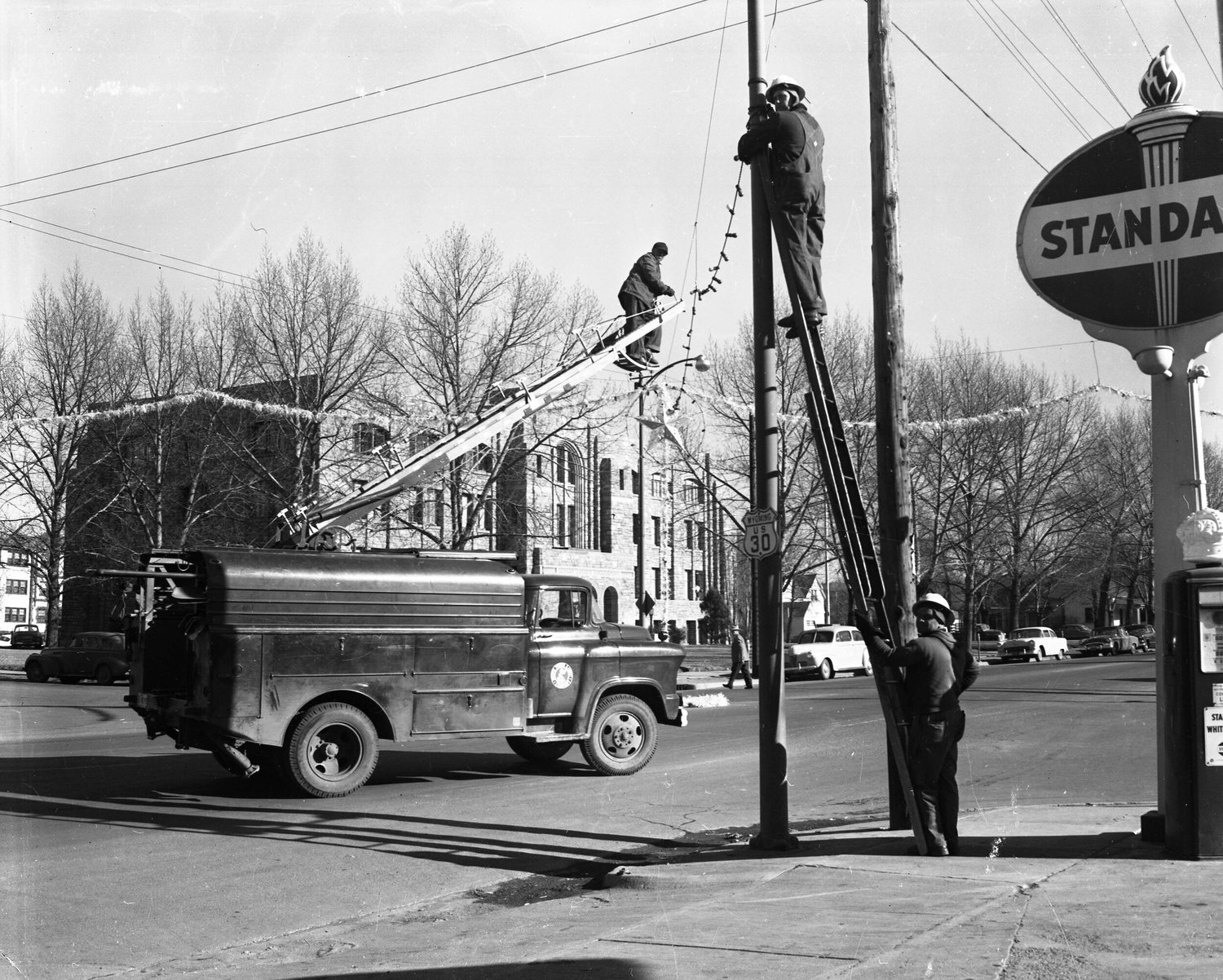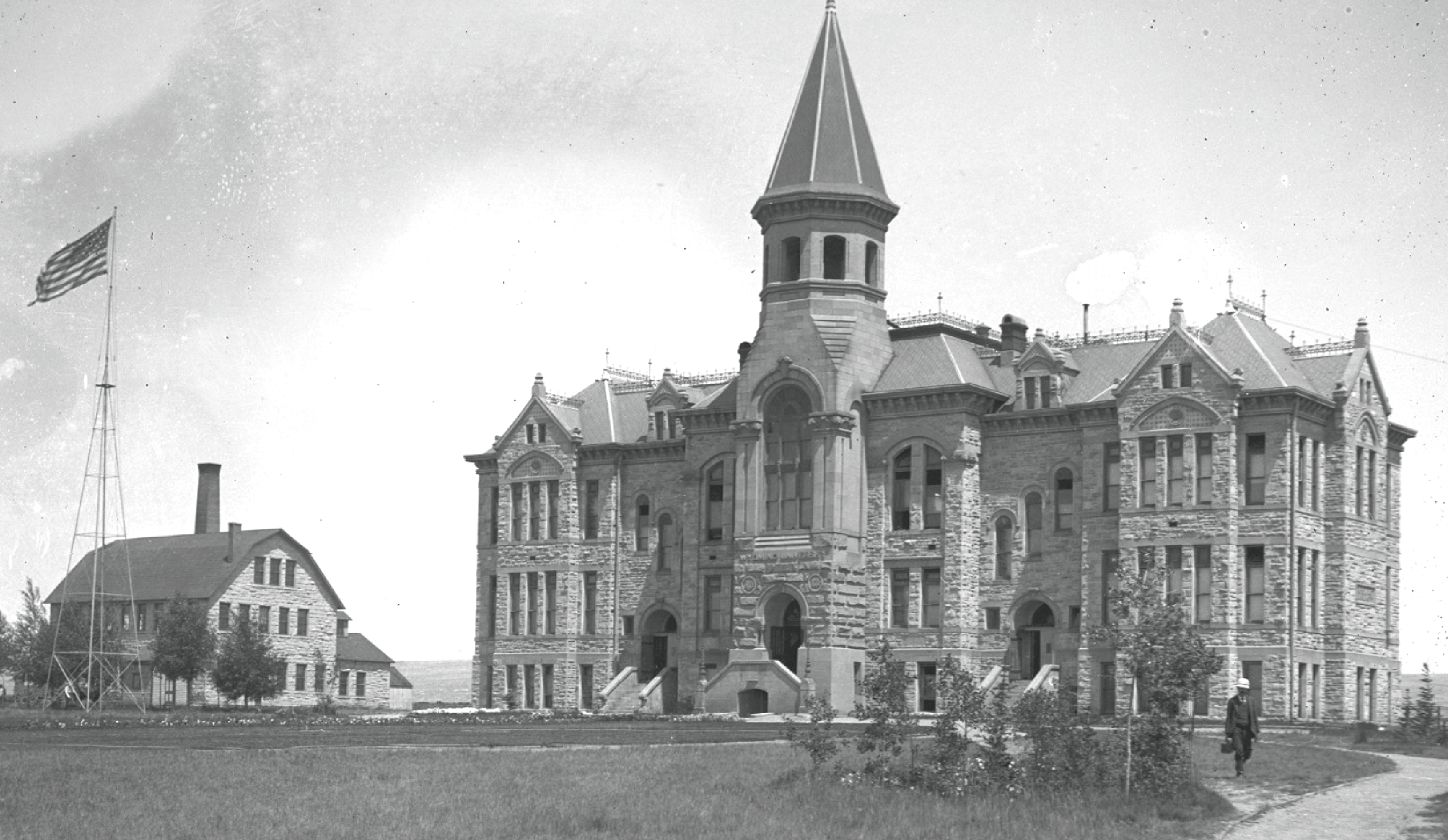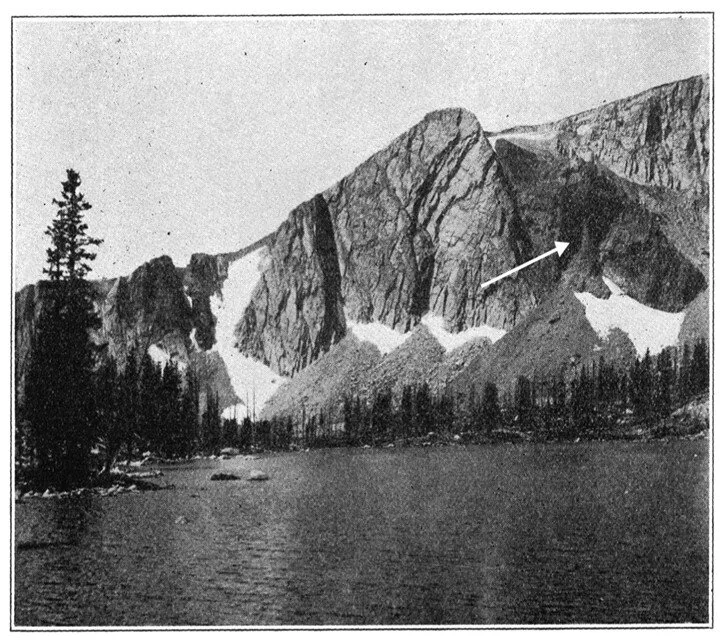
Laramie’s Living History —
A Variety of Other Topics
A series of stories prepared for the Albany County Museum Coalition, an alliance of institutions that promote Laramie’s historic and cultural resources. This series originally appeared in the Laramie Boomerang.
Not all Albany County history falls into a specific category; a wide assortment of additional topics are covered on these pages.
Looking for something specific?
Search for things related to Albany County and Laramie, Wyoming.
For a better search experience, use specific words and phrases, like “Thornton Biggs”, “Professor Larson”, etc.
Near Death of the University of Wyoming
From its founding in 1886, the University of Wyoming suffered a lack of funding from the Wyoming Territorial Legislature. Within three years of UW accepting the first students in 1887, new money flowing from the federal government provided the bulk of operating expenses. The funds were tied to the creation of an agriculture school and agricultural experiment stations. Without those, the federal money would not be forthcoming, and the university itself might cease to exist. The latter nearly happened!
The 2000-pound Civic Center bell--moved four times
To the right of the entrance to the Laramie Plains Civic Center’s Gryphon Theater, there is a large bronze bell. It has two inscriptions. The first denotes the year that the bell came to Laramie, “Laramie High School August 1900.” The second appears to indicate when the bell was placed on a low concrete pedestal at the northeast corner of the Center before being moved inside, “Placed Senior Distinction Day Class of 1951.” But what connects the two?
Horsepower in Laramie
There was a different look to Laramie streets before automobiles. Where the trains didn’t go, horses provided transportation until autos finally took over.
Prohibition–an experiment gone wrong in Albany County and nationwide
A Wyoming Constitutional amendment prohibiting alcohol went into effect on June 30, 1919. About six months later the 18th Amendment to the U.S. Constitution became effective. In 15 years of Prohibition, Wyoming’s most heinous crime of the entire era happened in Albany County.
The great circus elephant stampede—Laramie 1909
It’s hard to imagine the excitement when the Ringling Bros. train with over 40 cars pulled into Laramie. The town and countryside had been plastered with billboards months in advance. Its spectacle of July 30, 1909 left everyone talking for years.
It’s a Strike! Bowling Comes to Laramie
Laramie’s first bowling alley was in the “Theatre Saloon” leased by Charles Kuster on First St. For a few months in 1870 he advertised “Two good ten-pin alleys, free to patrons of the bar.”
Complicated customs for social visits in early Laramie
In pre-1900 Laramie, women with time on their hands visited each other in very prescribed ways. It might do for some to visit over the back fence while hanging up laundry, but that was the maid’s job in many Laramie homes. For genteel Laramie women, casual meetings happened in churches and stores, but a visit in someone’s home was covered by much more rigid customs.
Proud history of rural schools in Albany County. Flexibility required of teachers, pupils, and school boards.
Once there were 24 different school districts in Albany County. They offered whatever classes were needed at over 300 locations in the county. However, not all were active at the same time. District #1 served the city of Laramie with several school buildings, but also operated 11 rural schools. The other 23 rural districts in Albany County ranged all the way from Esterbrook in the north (now part of Converse County) to Mountain Home on the Colorado border.
High School for ranch kids meant boarding in town for many
Albany County is one of seven counties in Wyoming where all the various school districts are now combined into one for elementary education. Rural and city schools are under the same umbrella. But it wasn’t always that way.
The Story of the Snowy Range: 2 collisions & 2 billion years!
Medicine Peak quartzite started as quartz sand, became sandstone, and then was metamorphosed under intense pressure to its final form—very hard rock that sparkles in the sun. Yet even with this major transformation, the quartzite still provides clues about its ancient birthplace
Three U.S. Navy ships named to honor the State of Wyoming
For centuries countries have named their warships. Names have included adjectives such as the United Kingdom’s HMS Invincible. Other choices have been for fierce battles such as the U.S. Navy’s USS Tarawa and for prominent people; the USS Theodore Roosevelt aircraft carrier is an example. In the U.S. Navy, the most powerful ships of the day have been honored with the names of states. In the case of Wyoming, there have been three such ships that have been christened for the State of Wyoming
Celebrating homecomings and moving on in the aftermath of WWII, 1945-1950
The first few years after WWII were no ordinary time for Laramie and Wyoming. Weddings proliferated and so did a baby boom, though both had begun earlier as the pre-war buildup ended the Great Depression. Cynics said that men who became fathers during the war were hoping to avoid the draft—a ploy that did not work for most. As the war dragged on, married men with children were drafted or called up too.
Laramie photography in the 19th century
The Laramie Plains Museum (LPM) has photos by at least seventeen different photographers who worked between the late 1860s and 1900; most lived in Laramie for a time. The earliest known photographers to capture Laramie travelled the newly built Union Pacific Railroad. They recorded emerging towns as they popped up with the arrival of the railroad; many are ghost towns today. These early photos are an invaluable testament to the settlement of the west. Two well-known early photographers were Andrew J. Russell (1829-1902) and Arundel C. Hull (1849-1909).
From a men’s boarding club to the university Commons: 1897-1919 club emphasizes eating together
Until the erection of the first men’s dormitory in 1928 (now called McWhinnie Hall), the existence of a boarding clubs and then a University Commons for daily meals continued to play a significant role in helping out-of-town male students to integrate into the community and university, develop long-lasting social relationships, and persist to graduation.
A 1922 tragedy northeast of Laramie Beware of March blizzards!
A rancher and his wife living northeast of Laramie set out by foot on a nice March day for supplies. They had no way of knowing a blizzard was looming.
Mapping the Laramie Plains, Part II Third dimension captured at last
Methods had improved by the 1800s, when the young United States was acquiring large chunks of unknown territory. Maps by William Clark (of Lewis and Clark) and Charles Preuss (John C. Frémont's cartographer) added significantly to our geological knowledge. But they weren't perfect. Clark put today's Colorado too far north, thereby eliminating the Laramie Plains and much of southern Wyoming. Preuss's map was accurate for major features, but finer details could be unreliable, as we saw on the Laramie Plains.
Mapping the Laramie Plains, Part I In pursuit of the third dimension
In the spring of 1893, Albany County Surveyor W.O. Owen received a set of maps from the US Geological Survey for review. Owen had known what to expect, but the others who viewed them were surprised. "The maps are of a very interesting character ...", wrote a reporter for the Laramie Boomerang, "almost every hill and cañon can be determined at a glance!"
Holiday observances across Wyoming Merry or subdued, depending on the year
We may think that this year will be a “downer” but compared to the difficulties of being cheerful in some holidays past, there may be more room for optimism for us. In my sample of Wyoming December newspapers, editors try to be upbeat for the holidays, no matter what the circumstances, but some years are exceptions.
The crowning glory of Victorian womanhood; Or was long hair a huge time-waster instead?
Until the decade from 1910 to 1920, it was unthinkable that American women would wear their hair cut short. Nor was it at all proper for women to go out in public without wearing a hat. Styles in millinery accommodated whatever the hair styles dictated.



















